Funded articles
- Page Path
-
- HOME
- BROWSE ARTICLES
- Funded articles
- Funded articles
-
- National Research Foundation of Korea (33)
- Ministry of Science and ICT (16)
- Hamadan University of Medical Sciences (12)
- Ministry of Education (8)
- Chungnam National University (5)
- Korea Centers for Disease Control and Prevention (5)
- Korean Pediatric Society (5)
- Soonchunhyang University (5)
- Ministry of Health and Welfare (4)
- Korea Health Industry Development Institute (3)
- Ministry of Environment (3)
- Ministry of Science, ICT and Future Planning (3)
- Chonnam National University (2)
- Chulalongkorn University (2)
- Eulji University (2)
- Faculty of Medicine Ramathibodi Hospital (2)
- Faculty of Medicine, Prince of Songkla University (2)
- Faculty of Medicine, Universitas Islam Indonesia (2)
- Hanyang University (2)
- Inha University (2)
- Korea Disease Control and Prevention Agency (2)
- National Institutes of Health (2)
- Pusan National University (2)
- Tehran University of Medical Sciences and Health Services (2)
- Arak University of Medical Sciences (1)
- Bill and Melinda Gates Foundation (1)
- Cairo University (1)
- Chonnam National University Hospital (1)
- Chung-Ang University (1)
- Consejo Nacional de Ciencia y Tecnología (1)
- Council of Scientific and Industrial Research (1)
- Duhok General Directorate of Health (1)
- Durham, North Carolina (1)
- e Korea Disease Control and Prevention Agency (1)
- Environmental Health Center for Hazardous Chemical Exposure (1)
- European Commission-European Research Executive Agency (1)
- Faculty of Medicine, Chulalongkorn University (1)
- Faculty of Medicine, Siriraj Hospital, Mahidol University (1)
- Faculty of Medicine, South Valley University (1)
- Gyeongsang National University (1)
- Gyeongsang National University Hospital (1)
- Hamadan University (1)
- Hankuk University of Foreign Studies (1)
- ICMR MD/MS Thesis Research Grant (1)
- Ilsung Research Award of Korean Academy Pediatric Allergy and Respiratory Disease (1)
- Indonesia Endowment Fund for Education (1)
- Inha University Hospital (1)
- Inje University (1)
- Institute for Information and Communications Technology Planning and Evaluation (1)
- Institute of Medical Science, Daegu Catholic University (1)
- JSPS KAKENHI (1)
- Kangwon National University (1)
- Kementerian Riset, Teknologi dan Pendidikan Tinggi (1)
- Khon Kaen University (1)
- Korea Childhood Leukemia Foundation (1)
- Korea Environmental Industry and Technology Insitute (1)
- Korea Environmental Industry and Technology Institute (1)
- Korea Institute of Radiological and Medical Sciences (1)
- Korea National Institute of Health (1)
- Korea University Anam Hospital (1)
- Korean Academy of Pediatric Allergy and Respiratory Disease (1)
- Korean Society of Breastfeeding Medicine (1)
- Kunhee Lee Child Cancer & Rare Disease Project (1)
- Kurdistan University of Medical Science (1)
- Kyung Hee University (1)
- Kyungpook National University Hospital (1)
- Luzhou Municipal People’s Government-Southwest Medical University Science and Technology strategic cooperation (1)
- Manipal Academy of Higher Education (1)
- Manipal Research grant (1)
- Ministry of Education, Culture, Sports, Science, and Technology (1)
- Ministry of Finance of Indonesia (1)
- Ministry of Health, Labour and Welfare (1)
- Ministry of Higher Education and Science of the Republic of Kazakhstan (1)
- Ministry of Science and Technology (1)
- Ministry of Science, Information and Communication Technology, and Future Planning (1)
- Mundipharma Pharmaceutical Sdn. Bhd (1)
- Namseoul University (1)
- National Cancer Center (1)
- National Center for Child Health and Development (1)
- National Center for Mental Health (1)
- National Health Insurance Ilsan Hospital (1)
- National Health Insurance Service Ilsan Hospital (1)
- National Institute of Medical Research Development (1)
- National IT Industry Promotion Agency (1)
- Navajbhai Ratan Tata trust - Health (1)
- Nazarbayev University (1)
- PEER/USAID (1)
- Probiotics International Ltd (1)
- Pusan National University Hospital (1)
- Pusan National University School of Medicine and Biomedical Research Institute (1)
- Pusan National University Yangsan Hospital (1)
- Ramathibodi Research Fund (1)
- Ratchadapisek Sompoch Endowment Fund (1)
- Research of Korea Disease Control and Prevention Agency (1)
- Samsung Medical Center (1)
- Seoul National University Bundang Hospital (1)
- Seoul National University Hospital (1)
- Severance Children’s Hospital (1)
- Severance Hospital Research Fund for Clinical Excellence (1)
- Sichuan Science and Technology Program (1)
- Soonchunhyang University Research Fund (1)
- Thailand Science Research and Innovation Fund Chulalongkorn University (1)
- The Health System Research Institute, Ministry of Public Health (1)
- Union Grants Commission (1)
- Universitas Indonesia (1)
- Universiti Teknologi MARA (1)
- Uttarakhand State Council for Science and Technology (1)
- WPLab, Inc. (1)
- Yonsei University College of Medicine (1)
- Zeist Foundation (1)
- Original Article
- Developmental and Behavioral Medicine
- Neonatal risk factors associated with autism spectrum disorders: an umbrella review
- Amir Mohammad Salehi, Erfan Ayubi, Salman Khazaei, Ensiyeh Jenabi, Saeid Bashirian, Zohreh Salimi
- Clin Exp Pediatr. 2024;67(9):459-464. Published online July 19, 2024
-

Question: What are the neonatal risk factors for autism spectrum disorder (ASD)?
Findings: Significant effect sizes were observed for congenital heart disease (odds ratio [OR], 1.35), macrosomia (OR, 1.11), low birth weight (OR, 1.63), very low birth weight (OR, 2.25), small for gestational age (OR, 1.17), jaundice (OR, 1.74), male sex (OR, 1.47), and Apgar score (OR, 1.40).
Meaning: These factors were identified as risk factors for ASD.
- Infection
- Construction and validation of predictive models for intravenous immunoglobulin–resistant Kawasaki disease using an interpretable machine learning approach
- Linfan Deng, Jian Zhao, Ting Wang, Bin Liu, Jun Jiang, Peng Jia, Dong Liu, Gang Li
- Clin Exp Pediatr. 2024;67(8):405-414. Published online July 23, 2024
-

Question: Is there a reliable model to predict intravenous immunoglobulin (IVIG)-resistant Kawasaki disease (KD)?
Finding: We constructed 5 machine learning models to predict IVIG-resistant KD. Extreme gradient boosting (XGBoost) model was superior to logistic, support vector machine, light gradient boosting machine and multiple layers perception models. The SHAP (SHapley Additive exPlanations) value interpreted the contribution of each feature in XGBoost model.
Meaning: XGBoost model showed the excellent performance to predict IVIG-resistant KD with explainable and visualizable machine learning algorithm.
- Review Article
- Nephrology (Genitourinary)
- Effects of diethylene glycol contamination of pharmaceutical products on unexplained acute kidney injury in children: a systematic review
- Sani Rachman Soleman, Muhammad Luthfi Adnan, Hilmi Ardian Sudiarto, Satria Bintang Mahathma, Alya Ayu Tazkia, Hana Afifah Firdaus, Alfreda Amelia Khotijah, Miranti Dewi Pramaningtyas, Emi Azmi Choironi
- Clin Exp Pediatr. 2024;67(8):395-402. Published online January 4, 2024
-

A recent unexplained acute kidney injury (AKI) outbreak due to pharmaceutical product contamination with diethylene glycol (DEG) raises public attention. Our study revealed that DEG-contaminated paracetamol causes unexplained AKI in children. However, paracetamol is not the only contaminated drug. Other drugs, such as cough expectorants, antihistamines, and sedatives, can also be affected. Other chemicals, such as ethylene glycol and propylene glycol, can also contribute to poisonings.
- Original Article
- Nutrition
- Parental support and exclusive breastfeeding at 3 months in West Java, Indonesia: a mixed-methods approach
- Ratu Ayu Dewi Sartika, Fadila Wirawan, Wawan Gunawan, Primasti Nuryandari Putri, Nurul Husna Mohd Shukri
- Clin Exp Pediatr. 2024;67(7):358-367. Published online June 21, 2024
-
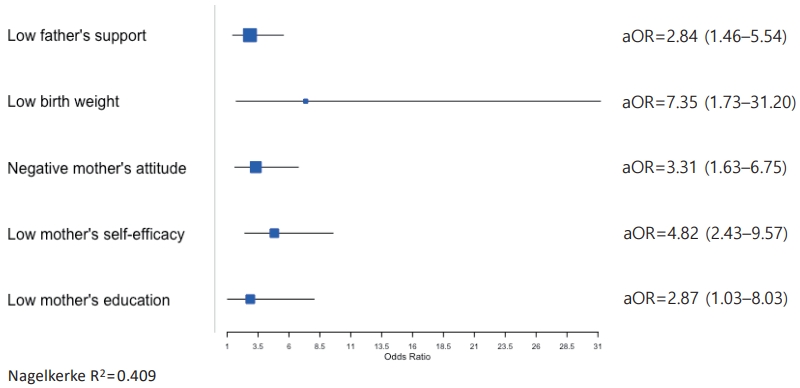
Question: Does paternal support affect exclusive breastfeeding failure?
Finding: Exclusive breastfeeding failure by 3 months was affected by paternal support.
Meaning: Fathers should be included in breastfeeding education and antenatal care.
- Review Article
- General Pediatrics
- Metabolic complications of obesity in children and adolescents
- Hyunjin Park, Jung Eun Choi, Seunghee Jun, Hyelim Lee, Hae Soon Kim, Hye Ah Lee, Hyesook Park
- Clin Exp Pediatr. 2024;67(7):347-355. Published online November 16, 2023
-
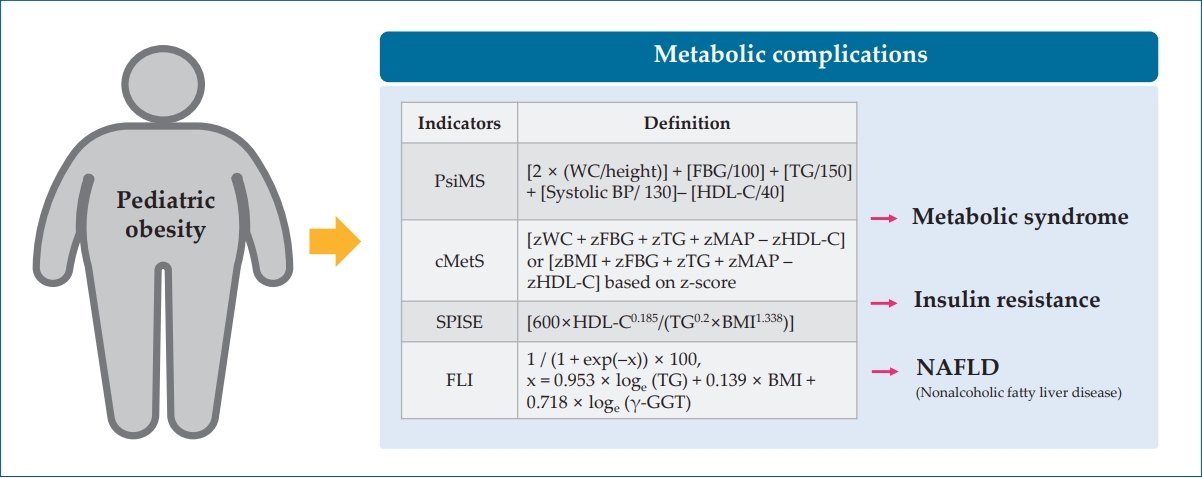
· Pediatric obesity increases the risk of metabolic complications (insulin resistance, dyslipidemia, nonalcoholic fatty liver disease) and long-term cardiovascular diseases.
· A new obesity definition and various indicators (continuous metabolic syndrome score, pediatric simple metabolic syndrome score, fatty liver index) have been proposed to evaluate children’s susceptibility to metabolic disorders.
· Laboratory and body composition tests in pediatric screenings can identify groups at high risk of metabolic complications of obesity.
- Original Article
- Developmental and Behavioral Medicine
- Effectiveness of online responsive teaching in young children with developmental disabilities: a pilot study
- Jung Sook Yeom, Jeongmee Kim
- Clin Exp Pediatr. 2024;67(6):303-311. Published online May 21, 2024
-

Question: Does online responsive teaching (RT) impact children's and parents’ emotions and behaviors, and do parents find it satisfactory?
Finding: Online RT significantly improved children's pivotal and problem behaviors, decreased parenting stress, and enhanced parental interactive styles with high satisfaction.
Meaning: This pilot study's findings suggest that online RT can enhance child outcomes, offering accessible interventions amid challenges such as limited access and pandemics.
- Endocrinology
- Kisspeptin and DLK1 levels for monitoring treatment of girls with central precocious puberty
- Witchuwan Onsoi, Nattakarn Numsriskulrat, Suphab Aroonparkmongkol, Vichit Supornsilchai, Khomsak Srilanchakon
- Clin Exp Pediatr. 2024;67(6):296-302. Published online May 21, 2024
-

Questions: Can the serum levels of kisspeptin and DLK1 be potential biomarkers for monitoring the treatments for central precocious puberty (CPP)?
Findings: There were no significant differences in the baseline serum kisspeptin and DLK1 levels in CPP girls compared to girls with premature thelarche (PT). After 6 months of GnRH analogue treatment in CPP girls, median serum kisspeptin levels decreased, while median serum DLK1 levels increased compared to baseline.
Meanings: Serum levels of kisspeptin and DLK1 may serve as novel biomarkers for monitoring the efficacy of treatments for CPP.
- Pulmonology
- Oligohydramnios affects pulmonary functional/structural abnormalities in school-aged children with bronchopulmonary dysplasia
- Jeong Eun Shin, Soon Min Lee, Mi-Jung Lee, Jungho Han, Joohee Lim, Haerin Jang, Ho Seon Eun, Min Soo Park, Soo Yeon Kim, Myung Hyun Sohn, Ji Ye Jung, Kyung Won Kim
- Clin Exp Pediatr. 2024;67(5):257-266. Published online April 16, 2024
-

Question: Is bronchopulmonary dysplasia (BPD) associated with functional/structural abnormalities later in life?
Finding: School-aged children with severe BPD had abnormalities on pulmonary function tests and lung computed tomography despite no subjective respiratory symptoms; however, only prenatal oligohydramnios and prolonged ventilator use were associated with abnormal lung function.
Meaning: Long-term monitoring of preterm infants’ lung health is essential, especially for those with prenatal oligohydramnios or prolonged ventilator use.
- Review Article
- Neonatology (Perinatology)
- Updates in neonatal resuscitation: routine use of laryngeal masks as an alternative to face masks
- Eun Song Song, Ga Won Jeon
- Clin Exp Pediatr. 2024;67(5):240-246. Published online July 11, 2023
-

In neonatal resuscitation:
· Laryngeal masks are recommended when endotracheal intubation or positive-pressure ventilation fails.
· Laryngeal masks are useful even during chest compressions.
· Laryngeal masks aid neonates >34 weeks’ gestation and/or with a birth weight >2 kg.
· Main usage barriers include limited experience (81%), preference for endotracheal tubes (57%), and lack of awareness (56%).
· Second-generation laryngeal masks have a built-in esophageal drainage tube that prevents regurgitation into the glottis, and an orogastric tube can be inserted within the esophageal drainage tube to protect against gastric inflation.
- Influence of infant microbiome on health and development
- Noelle Younge
- Clin Exp Pediatr. 2024;67(5):224-231. Published online August 21, 2023
-

· The infant gut microbiome is highly dynamic and individualized.
· Microbes are vertically transmitted from mother to infant during delivery and throughout infancy.
· Delivery mode, gestational age, diet, and antibiotic use influence infant microbiome composition and function.
· In animal studies, the microbiome played critical roles in the structural and functional development of the infant gastrointestinal and immune systems.
· Microbiome-targeted therapies have great potential to reduce infant morbidity and mortality.
- Letter to the Editor
- Pulmonology
- Metabolic syndrome and pulmonary dysfunction in asthmatic children during the COVID-19 pandemic
- Jue Seong Lee, Sang Hyun Park, Yoon Lee, Seunghyun Kim, Wonsuck Yoon, Young Yoo
- Clin Exp Pediatr. 2024;67(3):168-170. Published online February 19, 2024
-
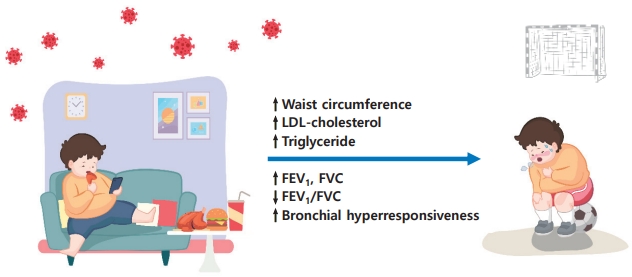
- Review Article
- Allergy
- Practical issues of oral immunotherapy for egg or milk allergy
- Sukyung Kim, Kangmo Ahn, Jihyun Kim
- Clin Exp Pediatr. 2024;67(3):140-148. Published online June 19, 2023
-
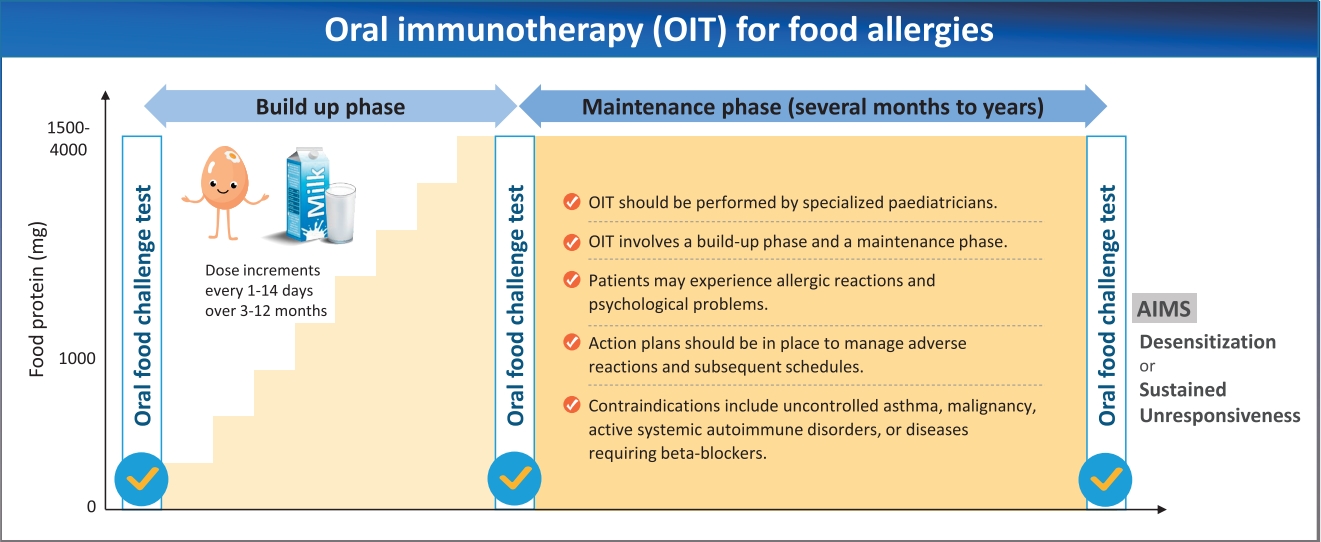
· Oral immunotherapy should be supervised by pediatricians with experience administering oral food challenge tests and managing allergic reactions.
· Food allergen intake is gradually increased and maintained for years.
· Patients may experience allergic reactions and psychological problems.
· Adjunctive therapies (biologics, antihistamines, and leukotriene receptor antagonists) may improve efficacy and safety.
· Contraindications include uncontrolled asthma, malignancy, active autoimmune disorders, and beta-blocker usage.
- Other
- Acetaminophen causes neurodevelopmental injury in susceptible babies and children: no valid rationale for controversy
- Lisa Zhao, John P. Jones, Lauren G. Anderson, Zacharoula Konsoula, Cynthia D. Nevison, Kathryn J. Reissner, William Parker
- Clin Exp Pediatr. 2024;67(3):126-139. Published online June 14, 2023
-

Despite worldwide acceptance of acetaminophen (paracetamol) in pediatric medicine, careful examination reveals no valid objections to the conclusion that early exposure to acetaminophen causes neurodevelopmental injury in susceptible babies and children. Nevertheless, debate that early exposure to acetaminophen causes neurodevelopmental injury has centered around the prenatal period, evidence of which is relatively limited compared to that in the postnatal period, which is the time of greatest absolute and relative risk.
- MicroRNAs as novel biomarkers for the diagnosis and treatment of pediatric diseases
- Hwal Rim Jeong, Il Tae Hwang
- Clin Exp Pediatr. 2024;67(3):119-125. Published online May 24, 2023
-

MicroRNAs (miRNAs) are small noncoding RNAs that regulate gene expression post transcriptionally, and MiRNA expression levels vary with developmental stages. MiRNAs play an important role in several biological processes in children, including growth, neuro-development, inflammation, and tumor formation. Research on miRNAs may uncover the molecular mechanisms underlying various pediatric diseases, leading to the development of novel biomarkers that aid in the diagnosis, treatment, and prognosis of these diseases.
- Original Article
- Other
- Virtual, augmented, and mixed reality: potential clinical and training applications in pediatrics
- Suyoung Yoo, Meong Hi Son
- Clin Exp Pediatr. 2024;67(2):92-103. Published online May 24, 2023
-

· Review of articles that investigated the applications of virtual, augmented, or mixed reality in pediatric clinical settings and in the training of pediatric medical professionals was conducted.
· A total of 89 studies were retrieved, with 36 randomized controlled trials.
· In most studies, intervention using the novel technology was at least as effective or more effective than the traditional method.
· Use of virtual, augmented, and mixed reality has potential in pediatrics.
- Clinical Note
- Neurology
- Expanding association between BICD2 variants and brain malformations and associated lissencephaly
- Jaeso Cho, Haeryung Kim, Seoungbok Lee, Jihoon G Yoon, HyeJin Kim, Minhye Kim, Seoyun Jang, Woojoong Kim, Soo Yeon Kim, Jong Hee Chae
- Clin Exp Pediatr. 2024;67(1):54-56. Published online December 21, 2023
-
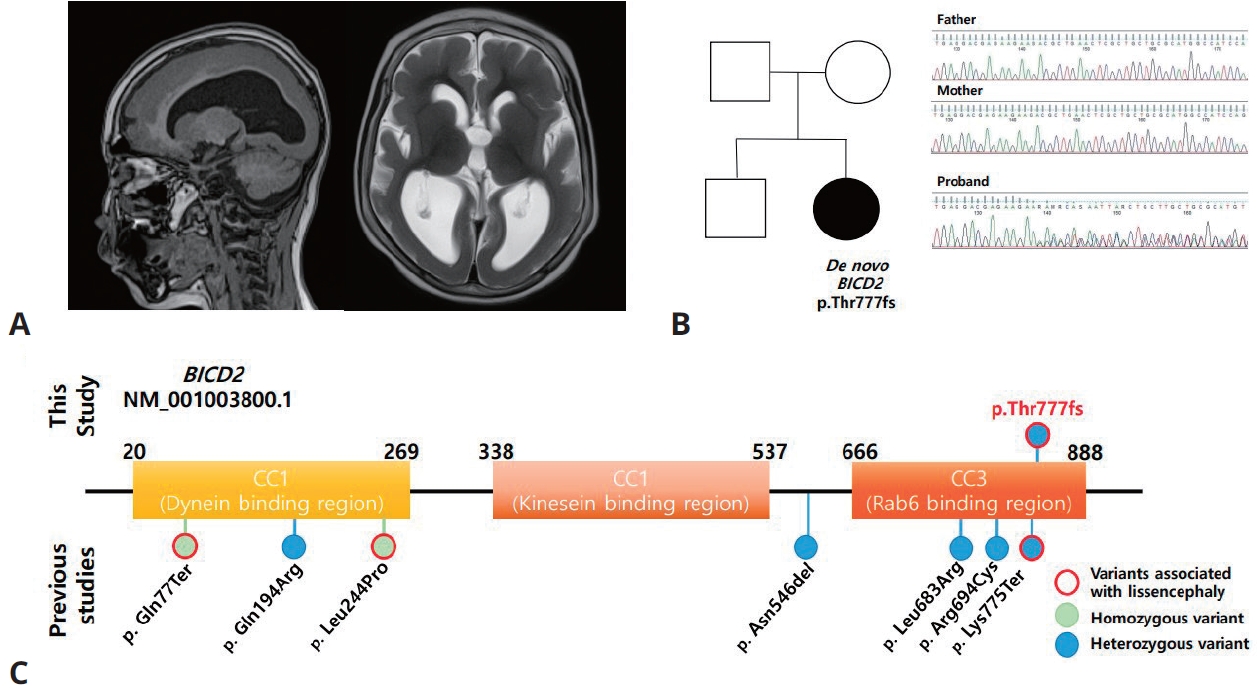
- Review Article
- Nephrology (Genitourinary)
- X-linked hypophosphatemic rickets: from diagnosis to management
- Eujin Park, Hee Gyung Kang
- Clin Exp Pediatr. 2024;67(1):17-25. Published online June 14, 2023
-
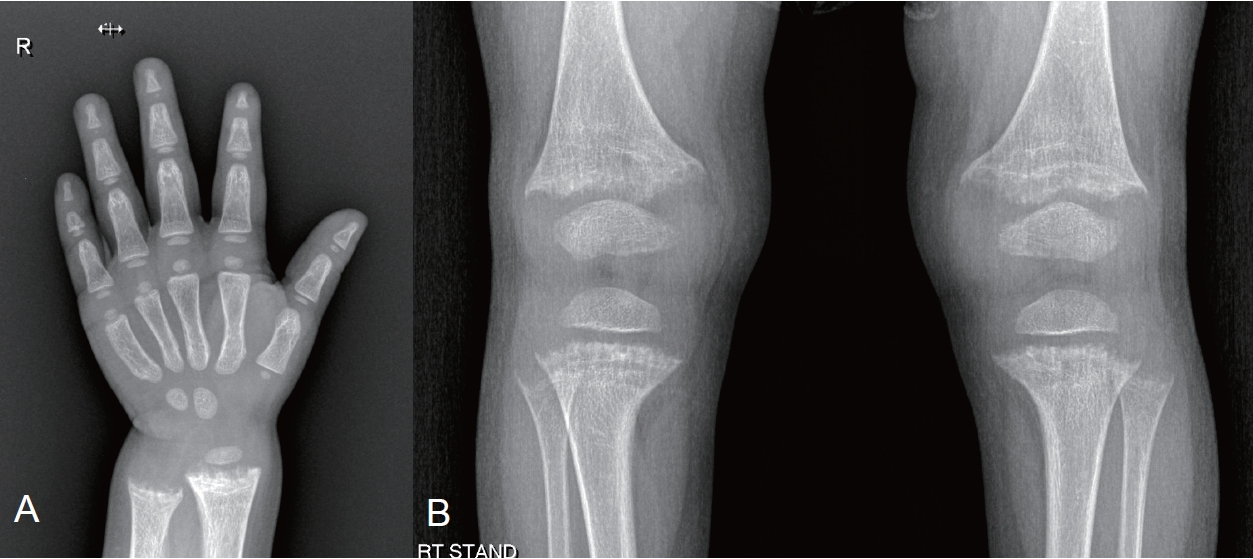
· X-linked hypophosphatemia (XLH), the most common cause of hypophosphatemic rickets, affects 1/20,000 people.
· XLH is caused by a loss-of-function mutation of the PHEX gene.
· Its main pathogenesis is elevated fibroblast growth factor-23 (FGF23) level.
· Burosumab, an FGF23 inhibitor, was developed in the early 2000s.
· Burosumab was approved in Korea in 2020 for XLH patients aged 1+ years with radiographic evidence of bone disease.
- Original Article
- General Pediatrics
- Virtual reality for pain reduction during intravenous injection in pediatrics: a systematic review and meta-analysis of controlled clinical trials
- Ensiyeh Jenabi, Saeid Bashirian, Amir Mohammad Salehi, Masoud Rafiee, Mozhdeh Bashirian
- Clin Exp Pediatr. 2023;66(12):533-537. Published online June 14, 2023
-
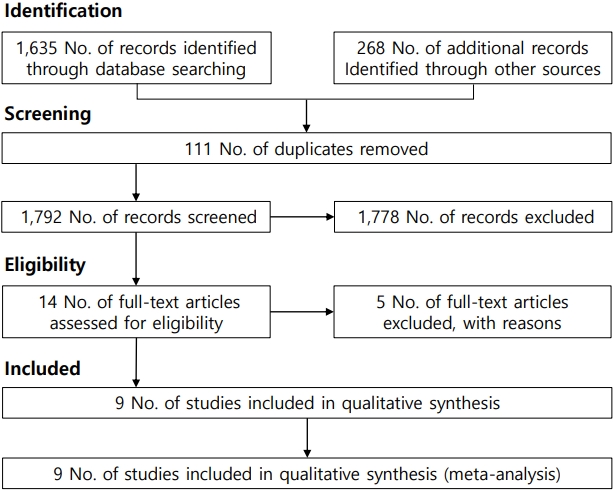
Question: This is the first meta-analysis to examine published evidence of the effectiveness of virtual reality at reducing pain during pediatric intravenous injections.
Finding: Our results suggest that virtual reality effectively reduces pain associated with intravenous injections in pediatric patients.
Meaning: These findings suggest the importance of virtual reality in decreasing the pain of intravenous injections among children.
- Review Article
- Endocrinology
- Applications of genomic research in pediatric endocrine diseases
- Ja Hye Kim, Jin-Ho Choi
- Clin Exp Pediatr. 2023;66(12):520-530. Published online June 14, 2023
-

· Recent advances in molecular genetics have improved our understanding of pediatric endocrine disorders and are now used in mainstream medical practice.
· Genome-wide association studies can increase our understanding of the biological mechanisms of disease and inform new therapeutic options.
· The identification of founder mutations leads to the efficient localization of the genes underlying Mendelian disorders.
· Next-generation sequencing technologies benefit clinical practice and research of pediatric endocrinology.
- Letter to the Editor
- Neonatology (Perinatology)
- Association between feeding intolerance and intestinal dysbiosis in very premature infants
- Putri Maharani Tristanita Marsubrin, Agus Firmansyah, Rinawati Rohsiswatmo, Zakiudin Munasir, Saptawati Bardosono, Safarina G. Malik, Yuditiya Purwosunu, Ina S. Timan, Tetty Yuniati, Maya Yulindhini
- Clin Exp Pediatr. 2023;66(11):501-503. Published online October 24, 2023
-
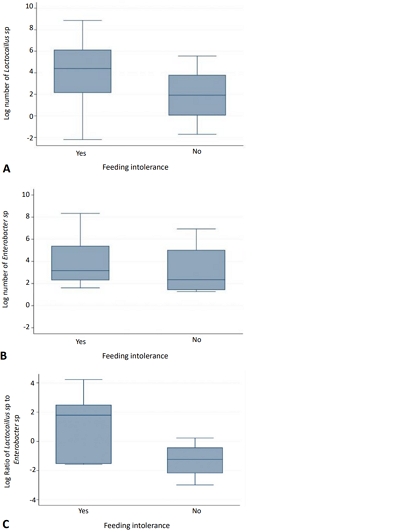
- Original Article
- Neonatology (Perinatology)
- Association between maternal coronavirus disease 2019 and transient tachypnea of the newborn: a single-center study
- Sung Hee Lee, Ju Hyun Jin, Jong Ha Yoo, Shin Won Yoon
- Clin Exp Pediatr. 2023;66(11):493-500. Published online October 24, 2023
-

Question: What are the adverse clinical outcomes of neonates of coronavirus disease 2019 (COVID-19)–infected mothers?
Finding: Infants of mothers with COVID-19 were at significantly increased risk of transient tachypnea of the newborn (TTN), use of noninvasive ventilation, and need for supplemental oxygen (P<0.05).
Meaning: Neonates of mothers with COVID-19 are at risk of TTN and require respiratory support. Close monitoring is essential to ensuring timely intervention if required.
- Developmental and Behavioral Medicine
- Attention-deficit/hyperactive-impulsive disorder symptoms among grade 1 students with reading disorder in Thailand
- Patcharapun Sarisuta, Issarapa Chunsuwan, Tippawan Hansakunachai, Paskorn Sritipsukho
- Clin Exp Pediatr. 2023;66(11):485-492. Published online October 24, 2023
-
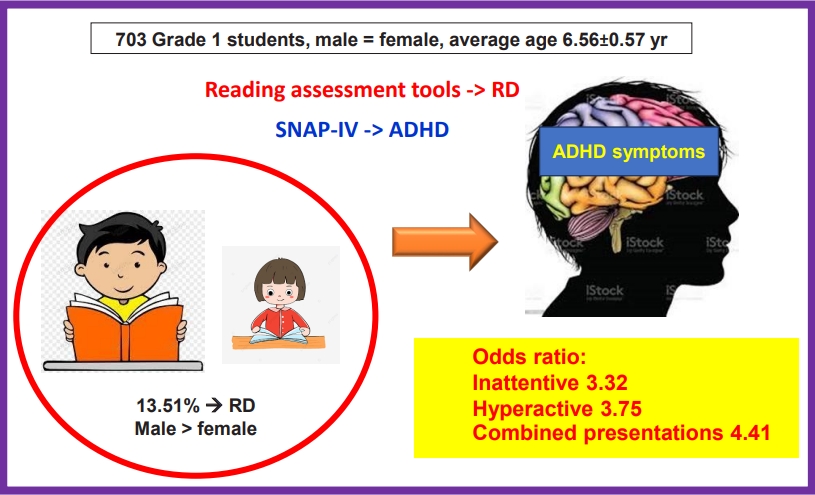
Question: Would students with reading disorder have a significantly higher prevalence of attention-deficit/hyperactiveimpulsive disorder (ADHD) symptoms than neurotypical students?
Finding: Students at risk of reading disorder exhibited significant ADHD symptoms compared with those not at risk of reading disorder according to all presentations of teacher assessments versus only for predominantly inattentive presentations of the parental assessments.
Meaning: Students with reading disorder have a significantly higher prevalence of ADHD symptoms than neurotypical students. Sex, parental education level, average family income, and children’s school affiliation significantly influenced reading disorder prevalence.
- Impact of short and intensive art-based intervention on symptomatology and social interactions among children with autism spectrum disorder
- Deldar Morad Abdulah, Bayar Mohammed Omar Abdulla, Pranee Liamputtong
- Clin Exp Pediatr. 2023;66(10):447-454. Published online September 14, 2023
-
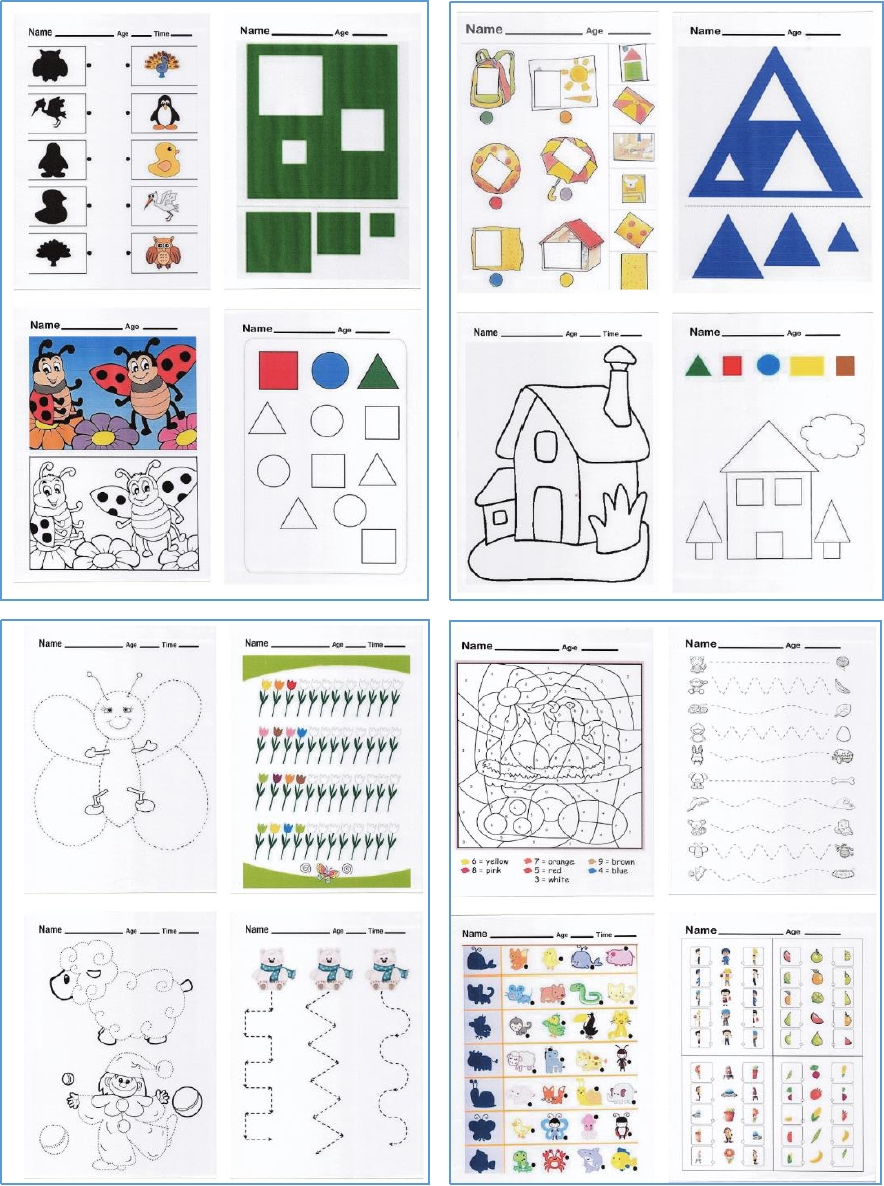
Question: Does a short and intensive art-based intervention affect symptoms and social interactions among children with autism spectrum disorder (ASD)?
Finding: The short and intensive art-based intervention did not affect symptoms in children with ASD level 2 or 3, including social awareness, social cognition, social communication, social motivation, and autistic mannerisms.
Meaning: The short and intensive art-based intervention did not improve the symptoms of patients with ASD.
- Neonatal risk factors associated with attention-deficit/hyperactivity disorder: an umbrella review
- Ensiyeh Jenabi, Erfan Ayubi, Sajjad Farashi, Saeid Bashirian, Fereshteh Mehri
- Clin Exp Pediatr. 2023;66(10):441-446. Published online July 14, 2023
-
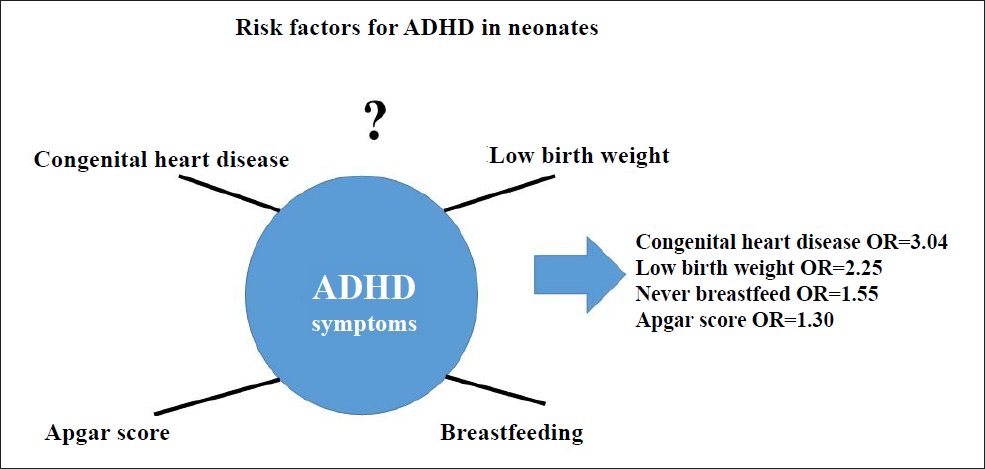
Question: The risk factors for attention deficit hyperactivity disorder (ADHD), such as breastfeeding, congenital heart disease, and low birth weight, in neonates are not well understood.
Finding: This umbrella review obtained significant effect sizes for ADHD for congenital heart disease (odds ratio [OR], 3.04), low birth weight (OR, 2.25), never breastfed (OR, 1.55), and Apgar score (OR, 1.30).
Meaning: Congenital heart disease, low birth weight, lack of breastfeeding, and Apgar scores were significant factors for ADHD.
- Review Article
- Other
- Hearing loss in neonates and infants
- Goun Choe, Su-Kyoung Park, Bong Jik Kim
- Clin Exp Pediatr. 2023;66(9):369-376. Published online January 9, 2023
-
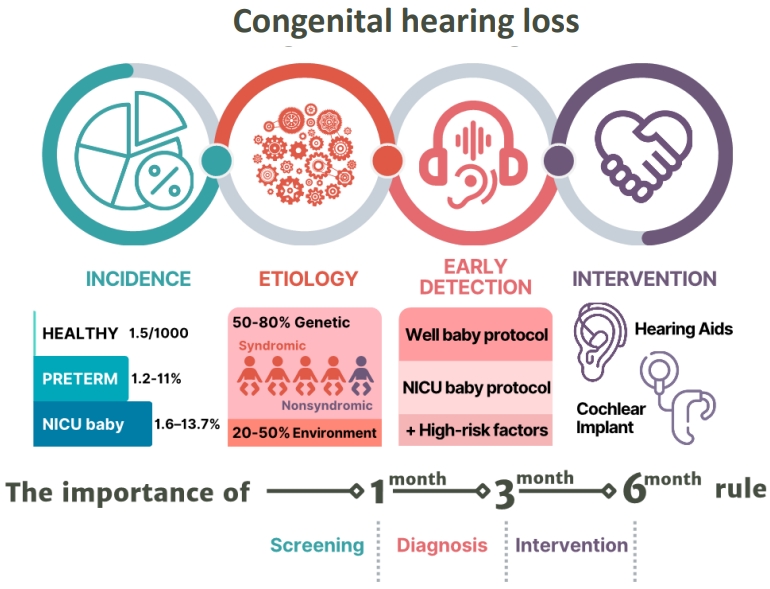
· Congenital hearing loss is common, with an approximate incidence of 1.5 per 1,000 newborns and affecting 1.2%–11% of preterm and 1.6%–13.7% of neonatal intensive care unit neonates.
· Etiologies vary, and up to 80% of cases are genetic.
· Newborn hearing screenings follow the 1-3-6 rule, and babies at high risk of hearing loss should be referred to otolaryngology for early detection and timely intervention.
- Letter to the Editor
- Infection
- SARS-CoV-2 fecal shedding pattern in pediatric patients with acute COVID-19 or COVID-19-associated multisystem inflammatory syndrome
- Setareh Mamishi, Fatemeh Jalali, Sepideh Benvari, Babak Pourakbari, Mohammad Reza Abdolsalehi, Reihaneh Hosseinpour Sadeghi, Mohammad Shahbabaie, Amene Navaeian, Shima Mahmoudi
- Clin Exp Pediatr. 2023;66(8):366-368. Published online June 14, 2023
-
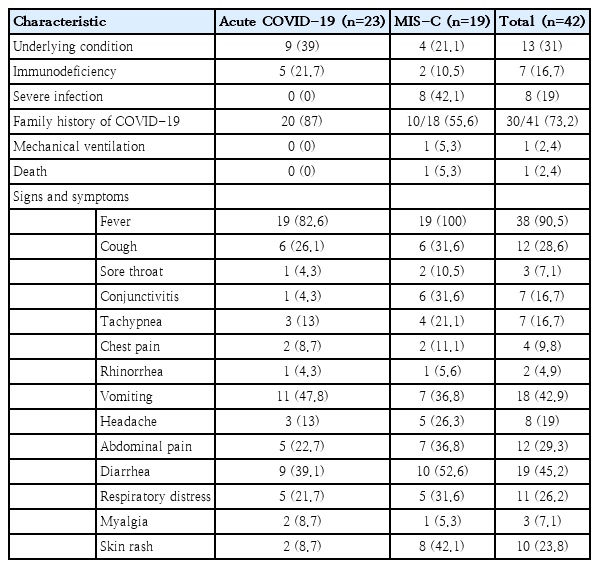
- Review Article
- Allergy
- Recent topics on gastrointestinal allergic disorders
- Yoshiyuki Yamada
- Clin Exp Pediatr. 2023;66(6):240-249. Published online January 9, 2023
-

Gastrointestinal (GI) allergies are divided into immunoglobulin E (IgE)-mediated, non-IgE-mediated, and mixed types. In addition to non-IgE-mediated, overlapping eosinophilic GI disorders (EGIDs) have increased in Japan. EGIDs, a mixed-type allergy category, include eosinophilic esophagitis (EoE) and non-EoE EGIDs. The number of EoE cases has increased in Western countries, followed by Asian countries. Recent GI allergies may also be associated with type 2 inflammation.
- Editorial
- Infection
- Impact and role of vitamins as immunonutrition in children during COVID-19 pandemic
- Yoo Min Lee
- Clin Exp Pediatr. 2023;66(5):212-214. Published online April 18, 2023
-

· Vitamins have effector mechanisms in the innate and adaptive immune systems and potential roles in preventing and reducing the severity of coronavirus disease 2019 (COVID-19).
· Vitamins may be immunonutrients in the treatment of COVID-19 infections and prevention of patient deterioration due to critical illness, thus demonstrating the significance of a nutritious, well-balanced diet.
- Review Article
- Neurology
- Electroencephalography source localization
- Tae-Hoon Eom
- Clin Exp Pediatr. 2023;66(5):201-209. Published online December 29, 2022
-
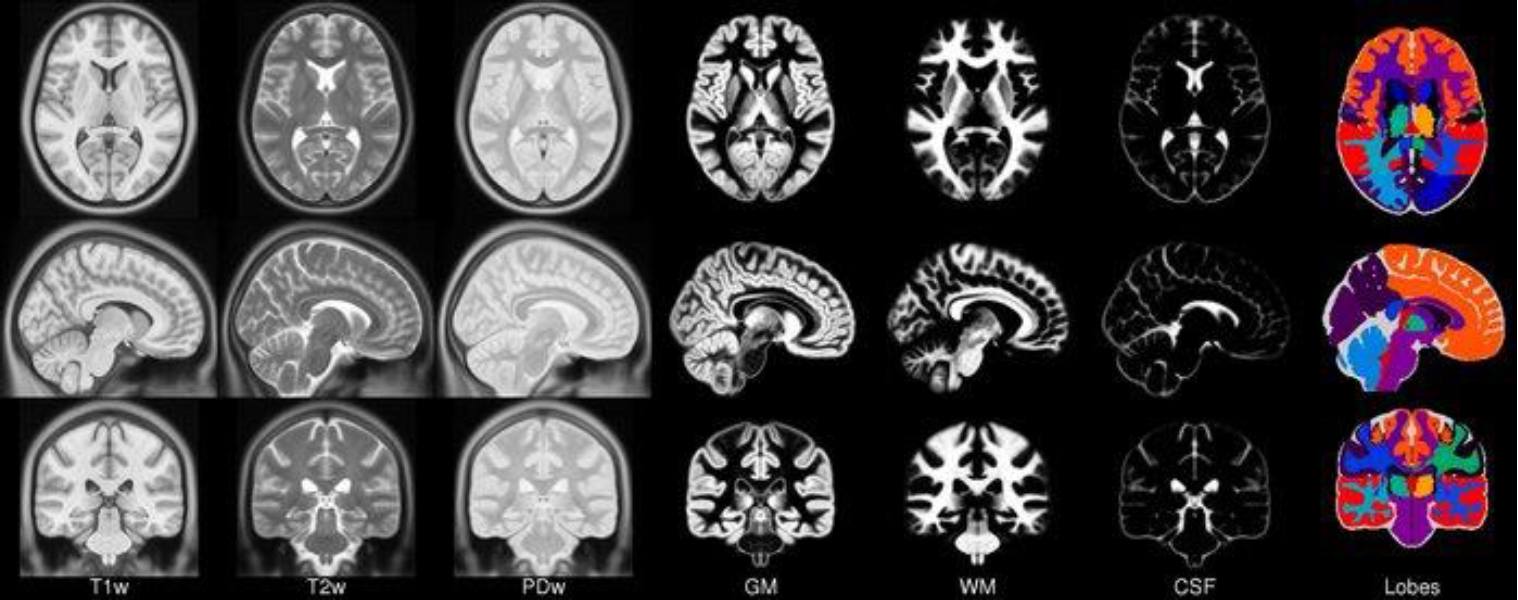
· Electroencephalography (EEG) directly images the electrical activity of neurons at a higher temporal resolution than other neuroimaging techniques.
· EEG is still widely used in brain function research due to its advantages.
· Forward and inverse problems of EEG analyses require solutions.
· Methods such as the dipole and distributed source models have been introduced.
· Applications of EEG are expanding with the integration of other technologies and large-scale data.
- Original Article
- Infection
- Predicting COVID-19 transmission in a student population in Seoul, South Korea, 2020–2021
- Young Hwa Lee, Han Ho Kim, Young June Choe
- Clin Exp Pediatr. 2023;66(4):173-178. Published online December 22, 2022
-
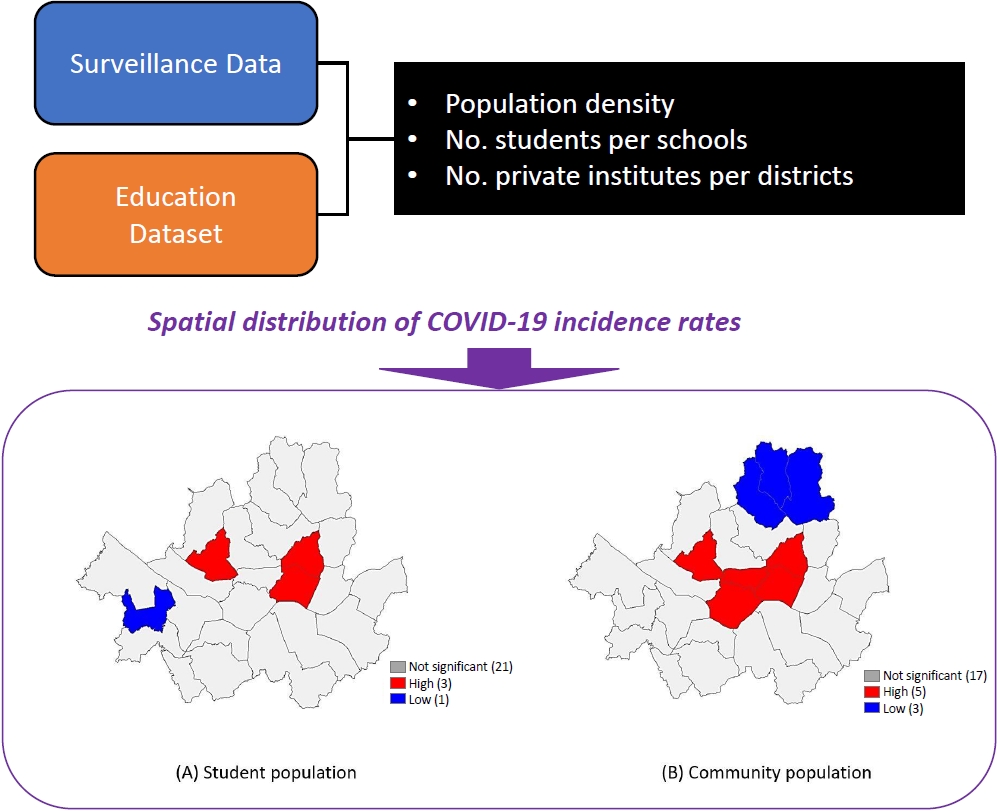
Question: What is the spatial distribution and determinants of coronavirus disease 2019 (COVID-19) infection among students in Korea?
Finding: The community population was closely associated with the risk of COVID-19, and the number of students per school class were inversely associated with COVID-19 rates in students.
Meaning: Our finding suggests that controlling the community-level burden of COVID-19 can help prevent sudden acute respiratory syndrome coronavirus 2 infection in school-aged children.
-

-
-
8.02023CiteScore94th percentilePowered by
-
Impact Factor3.2
-
- TOPICS
- ARTICLE CATEGORY
- Editorial Office
-
Korean Pediatric Society
#1606 Seocho World Officetel, 19 Seoun-ro, Seocho-ku, Seoul 06732, Korea
Tel: +82-2-3473-7306 Fax: +82-2-3473-7307 E-mail: office@e-cep.org
Clinical and Experimental Pediatrics is an open access journal. All articles are distributed under the terms of the Creative Commons Attribution NonCommercial License (http://creativecommons.org/licenses/by-nc/4.0/)
Copyright © 2025 by Korean Pediatric Society.











